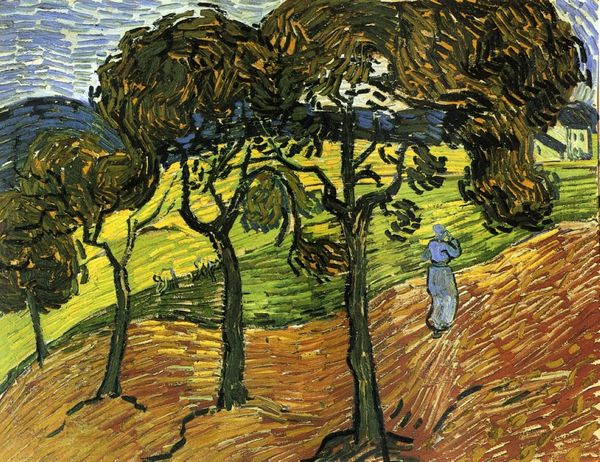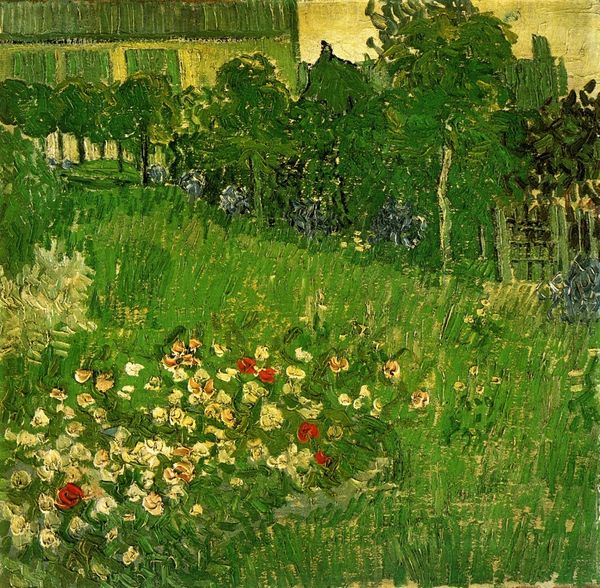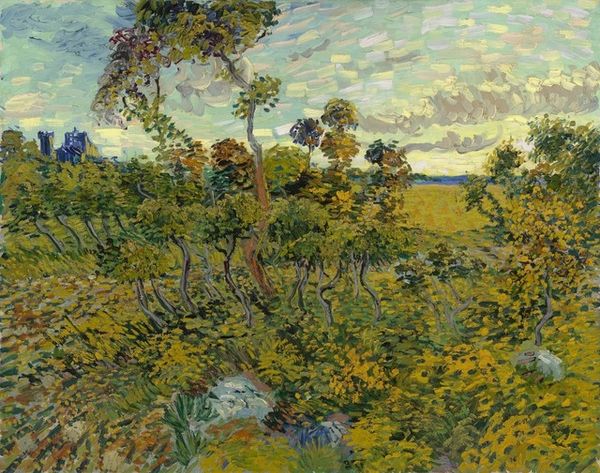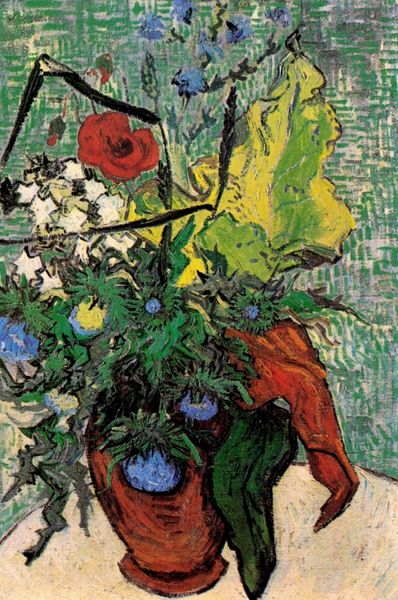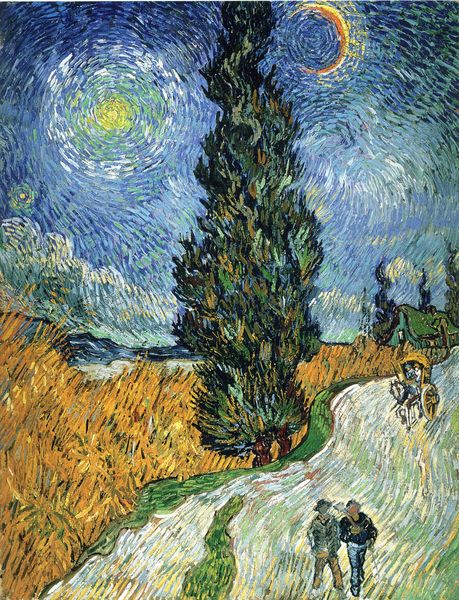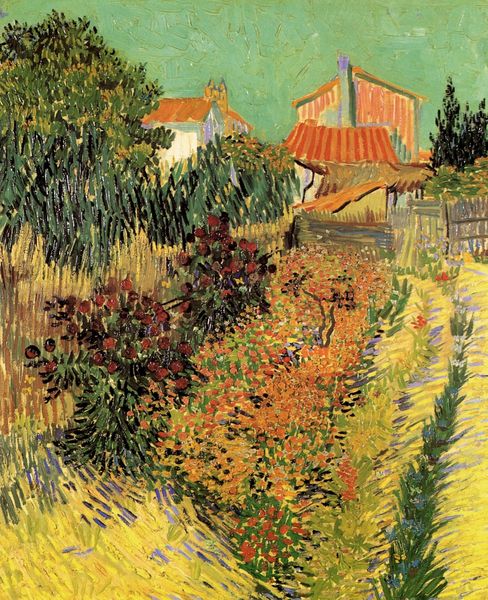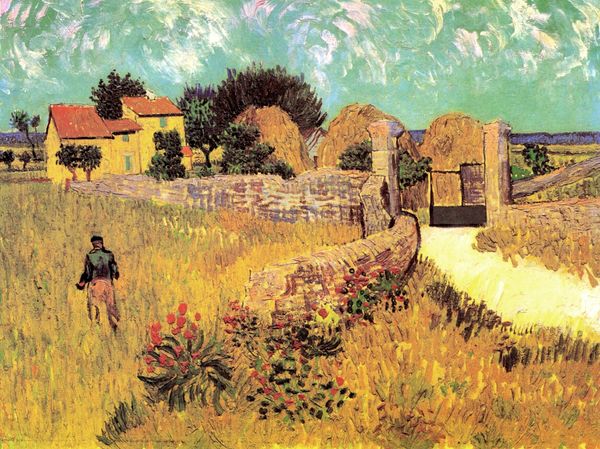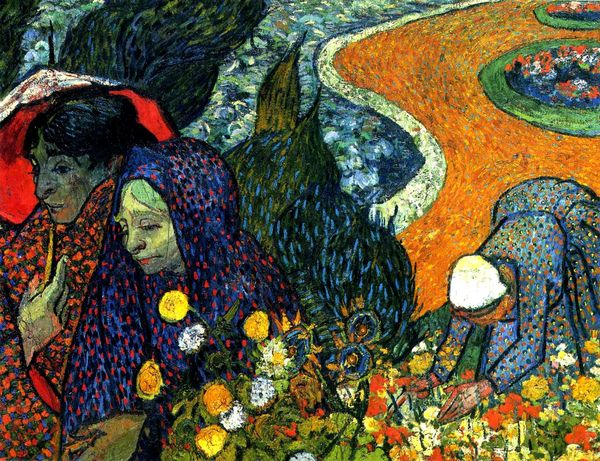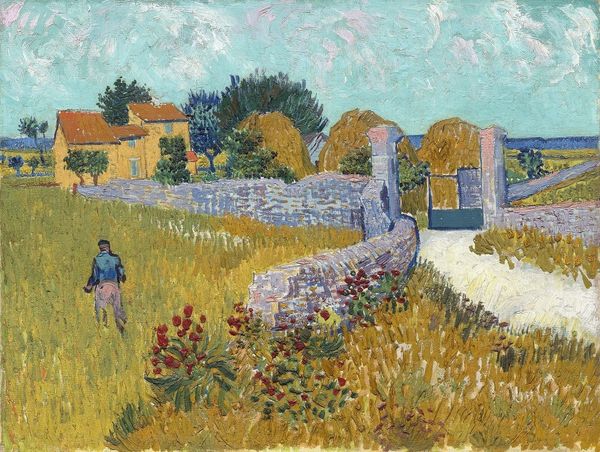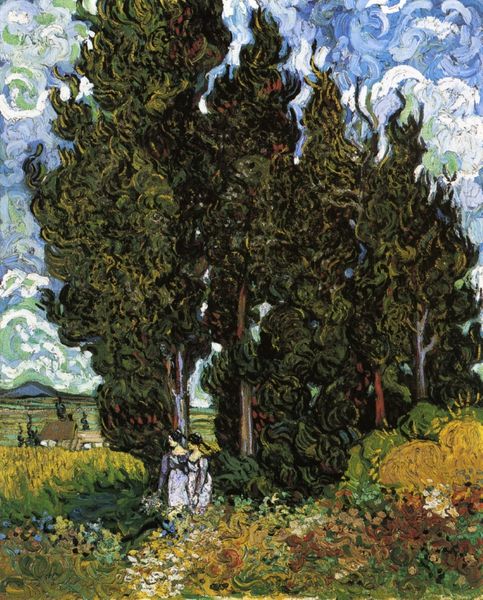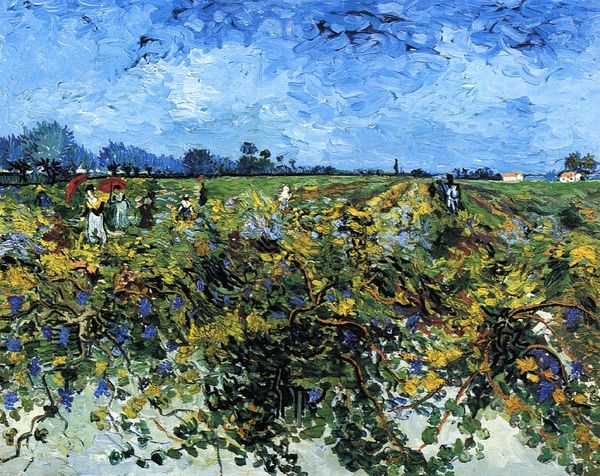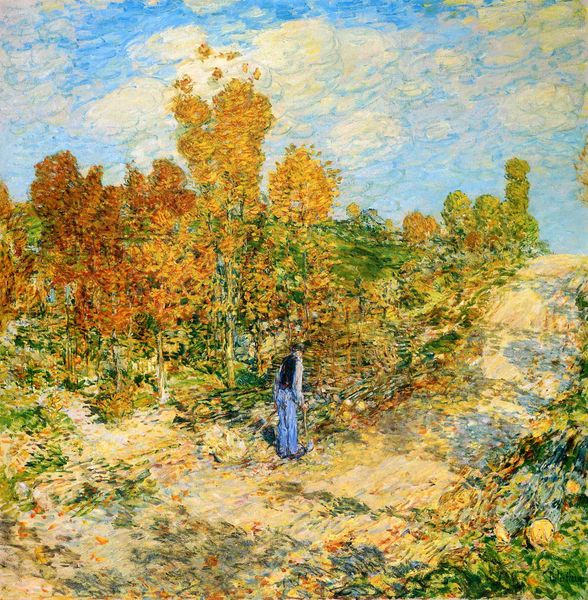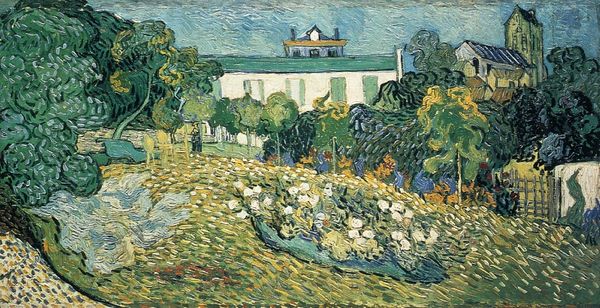
painting, plein-air, oil-paint
#
tree
#
garden
#
mother nature
#
painting
#
impressionism
#
plein-air
#
oil-paint
#
landscape
#
impressionist landscape
#
fluid art
#
plant
#
naive art
#
men
#
park
#
genre-painting
#
post-impressionism
Dimensions: 46 x 55 cm
Copyright: Public domain
Curator: This is Van Gogh’s "Mademoiselle Gachet in her garden at Auvers-sur-Oise," painted in 1890, now hanging in the Musée d'Orsay. It’s a vibrant work rendered in oil on canvas. Editor: Whoa, there’s something immediately dreamlike about this. The figure seems almost translucent, and the flowers look like they are dancing—but there is also an anxious undertone, as though they might fade if you look too hard. Curator: Absolutely. Van Gogh's choice of the garden setting and the specific rendering of Mademoiselle Gachet connect to broader cultural themes. He was profoundly interested in how people interacted with nature. The Gachet family home itself became a salon of sorts for avant-garde artists. Editor: She almost blends into the blooms! There's a fragility there, but also maybe a metaphor for womanhood? It looks a lot like a feminine idyll but I can't shake this feeling of sadness too; maybe it's the slightly overcast sky in contrast to her pale, flowing dress. Curator: I find your read of sadness quite astute. The piece was made during a time of considerable stress in Van Gogh’s life; he sought refuge in painting, but struggled greatly with mental illness. Perhaps some of that turbulence seeped in. There's a tension here between escapism and a creeping feeling of isolation. Editor: Maybe, but that turbulent state might also have been what enabled him to see things so intensely. The raw brushstrokes make the scene jump, like reality heightened. You know, a beautiful burden of living. Curator: I agree that he has a very unique and deeply profound approach to his subjects. Van Gogh understood the human condition intimately and sought to give a visual language to it in landscapes as well as his portraits. The brushstrokes carry his emotion directly to us. Editor: It's that immediate, unfiltered sense of emotion. A rare moment in the garden captured through raw emotion—you can see it in the garden's rhythm, and even feel it on your skin. So gorgeous and terrible. Curator: Yes, utterly raw emotion is the key to understanding the painting and it's continuing grip on art history and indeed, our shared cultural soul. Editor: Yeah, and it all comes together. Such intense feeling in such a serene setting… a reminder to really *look* next time I am in the garden.
Comments
No comments
Be the first to comment and join the conversation on the ultimate creative platform.
